Comments / Questions (33)
![]() Cathy Kapp wrote:
Cathy Kapp wrote:
I really love this design but find it very hard to follow the pattern which is not written very well. I am an experienced knitter and I've been knitting for more than 50 years. Please tell me how I can put markers where the front, sleeve, back and other sleeve is, this would make it easier to see any mistakes I make. I'm assuming when I get to the last row on the diagram that I start at row 1 again. Thanks for your help.
14.12.2021 - 02:28DROPS Design answered:
Hi Cathy, You can insert markers on each side of all A.2 sections (each transition between body and sleeves). When you have completed a diagram go to row 1 for the next repeat as you say. Happy knitting!
14.12.2021 - 07:07
![]() Mathilde wrote:
Mathilde wrote:
PS ^^ : En démarrant le col, lorsque l'on monte les 138 mailles, lesquelles concernent les côtés ? ( les épaules, puis les manches ) ? Seraient-ce les 8 côtes ? Encore Merci pour votre aide, par avance :)
15.10.2021 - 01:51DROPS Design answered:
Bonjour Mathilde, les tours commencent au milieu dos, les 28 m de A.1 seront ensuite tricotées en suivant A.2 (= raglans) et les 12 m (1 m end, (2 m end, 2 m env) x 8, 2 m env, 1 m end) sont pour les manches. Bon tricot!
15.10.2021 - 08:01
![]() Mathilde wrote:
Mathilde wrote:
Bonjour à l'équipe ;) . Je me demandais si le fait de relever les mailles de dessous la manche, était équivalent à les faire "glisser" sur l'aiguille ? Je sais relever des mailles sur un ouvrage commencé mais sur une "chainette" de points rajoutés.. je ne l'ai jamais fait :/ Merci par avance de votre réponse et bonne journée ;)
14.10.2021 - 21:42DROPS Design answered:
Bonjour Mathilde, cette leçon montre, dans les photos 18A/B comment soit monter (A) soit relever (B) les mailles dans les mailles montées sous la manche. En espérant que ceci puisse vous aider. Bon tricot!
15.10.2021 - 07:50
![]() Julita Skowrońska wrote:
Julita Skowrońska wrote:
Dzień dobry Schemat A2 ma w każdym rozmiarze jedno oczko mniej niż A1, a powinien być przerabiany jako ciągłość A1. Czy to błąd czy ja źle rozumiem schemat? Dziękuję i pozdrawiam Julita
04.08.2021 - 08:10DROPS Design answered:
Witaj Julito, na końcu schematu A.1 masz 27 oczek, a na początku schematu A.2 jest ich również 27. Zobacz dokładnie opis symboli. Pozdrawiamy!
04.08.2021 - 09:32
![]() Giusi wrote:
Giusi wrote:
Buongiorno 🙂 Sarebbe possibile realizzare un'alzata sul dietro per creare uno scollo anatomico? In caso potreste indicarmi un modello da cui ricavare le istruzioni? Grazie!
08.04.2021 - 10:32DROPS Design answered:
Buonasera Giusi, si, può realizzare un'alzata sul dietro del collo per migliorare la vestibilità: può cercarne una che la piace tra i modelli top down. Buon lavoro!
09.04.2021 - 23:22
![]() Marian Stagelund wrote:
Marian Stagelund wrote:
Fed måde at strikke på, oppe fra og ned, det var hurtig at finde ud af om str passede, når bærestykket var færdig, sæt arbejdet på to rundpinde, og prøv den. Jeg havde svært ved at strikke diagrammet i siden sammen, men at være kreativ lønner sig, så efter et par forsøg, var jeg tilfreds.
27.03.2021 - 07:03
![]() Aluisa Toni wrote:
Aluisa Toni wrote:
E' possibile lavorare questo modello dal basso e con due ferri? Perché mi piace molto il modello ma non ho mai lavorato il top-down. Grazie
08.01.2021 - 13:51DROPS Design answered:
Buongiorno Aluisa, questo modello è stato progettato per la lavorazione dall'alto in tondo: se volesse lavorarlo dal basso dovrebbe riprogettarlo tutto. Buon lavoro!
09.01.2021 - 12:36
![]() Emmi Kirvesmäki wrote:
Emmi Kirvesmäki wrote:
Missä ovat ohjeen A3 ja A4 kaavat?
23.12.2020 - 19:32DROPS Design answered:
Hei, nyt piirrokset löytyvät ohjeesta.
15.03.2021 - 18:42
![]() Ida Cirelli wrote:
Ida Cirelli wrote:
Non trovo i diagrammi A3 e A4 relativi al ricamo del raglan che va a diminuire in niente proverò ad inventarlo. strano perché le istruzioni sono sempre perfette grazie mille ida
04.11.2020 - 12:07DROPS Design answered:
Buonasera Ida, i diagrammi A.3 e A.4 sono in fondo alla pagina, di fianco allo schema delle misure, sono formati da 2 maglie ciascuno. Buon lavoro!
04.11.2020 - 19:15
![]() Renata wrote:
Renata wrote:
I do not understand this part: Increase tip-1 (for body) Increase 1 stich inside A.2 on back!! and front!! piece (=4 stitches increased on mid-stitch on back !!piece) Back and front or only back??? Every raw or only the first row??? There is no mention about this increase more.
21.10.2020 - 09:22DROPS Design answered:
Dear Renata, you will increase a total of 4 stitches on the round, this means you will have 2 more sts on front piece and 2 more sts on back piece. If you feel there is something wrong in your language, feel free to ask your question in your language or tell us so that we can check, thanks already. This tip applies to body when you increase after division of piece - you decrease at the same time on each side of marker so that number of sts stays the same. Hope this helps, happy knitting!
21.10.2020 - 10:54
Sweet Heather#sweetheathersweater |
|||||||||||||||||||||||||
 |
 |
||||||||||||||||||||||||
Knitted sweater with raglan in DROPS Merino Extra Fine. The piece is worked top down with lace pattern. Sizes S - XXXL
DROPS 201-18 |
|||||||||||||||||||||||||
|
------------------------------------------------------- EXPLANATIONS FOR THE PATTERN: ------------------------------------------------------- PATTERN: See diagrams A.1 to A.4. Choose diagrams for your size (applies to A.1 and A.2). RAGLAN: Increase 1 stitch on each side of A.2 (= 8 stitches increased on round). Increase 1 stitch by making 1 yarn over; on the next round knit the yarn overs to leave holes. Then work the new stitches in stockinette stitch. ROW OF HOLES: The increases to raglan on the front and back pieces are finished before the increases on the sleeves. So that the row of holes made by the increases inside A.2 continue, work a lace pattern as far as the body (A.3/A.4) inside A.2 as follows: Work A.3 when 2 stitches remain before A.2 and sleeve on the back piece and when 2 stitches remain before the last repeat of A.2 on the front piece. Work A.4 after the first repeat of A.2 on the front piece and after the sleeve and A.2 on the back piece. INCREASE TIP-1 (for body): Increase 1 stitch inside A.2 on back and front piece (= 4 stitches increased on round). On the next round knit the yarn overs to leave holes. Each time you increase, the number of stockinette stitches is increased between the 2 repeats of A.2 on the back and front pieces. INCREASE TIP-2 (evenly spaced): To work out how to increase evenly, count the total number of stitches on the needle (e.g. 206 stitches) and divide by the number of increases to be made (e.g. 30) = 6.9. In this example, increase by making 1 yarn over after approx. each 7th stitch. On the next round work the yarn overs twisted to avoid holes. DECREASE TIP-1 (for sides of body): Work until there are 3 stitches left before the marker thread, knit 2 together, knit 2 (marker thread sits between these 2 stitches), slip 1 stitch as if to knit, knit 1 and pass the slipped stitch over the knitted stitch. Repeat on other side (= 4 stitches decreased on round). DECREASE TIP-2 (for sleeves): Decrease 1 stitch on each side of the marker thread as follows: Work until there are 3 stitches left before the marker thread, knit 2 together, knit 2 (marker thread sits between these 2 stitches), slip 1 stitch as if to knit, knit 1 and pass the slipped stitch over the knitted stitch. ------------------------------------------------------- START THE PIECE HERE: ------------------------------------------------------- SWEATER – SHORT OVERVIEW OF THE PIECE: The piece is worked in the round with circular needle, top down. The sleeves are worked in the round with short circular needle/double pointed needles. NECK: Cast on 138-138-146-146-154-154 stitches with circular needle size 3 mm = US 2,5 and Merino Extra Fine. Knit 1 round then work rib as follows: Knit 1, A.1 (choose diagram for your size) over the first 28-28-30-30-32-32 stitches, knit 1, (purl 2 /knit 2) over the next 8 stitches, purl 2, knit 1, A.1 over the next 28-28-30-30-32-32 stitches, knit 1, A.1 over the next 28-28-30-30-32-32 stitches, knit 1, (purl 2 /knit 2) over the next 8 stitches, purl 2, knit 1, A.1 over the next 28-28-30-30-32-32 stitches. Continue like this in the round until A.1 has been completed in height = 134-134-142-142-150-150 stitches. YOKE: Change to circular needle size 4 mm = US 6 and work pattern as follows: Knit 1 (= mid-stitch on back piece), 1 yarn over, A.2 (choose diagram for your size) over the next 27-27-29-29-31-31 stitches (= half back piece), 1 yarn over, knit 12, 1 yarn over (= sleeve), A.2 over the next 27-27-29-29-31-31 stitches, 1 yarn over, knit 1 (= mid-stitch on front piece), 1 yarn over, A.2 over the next 27-27-29-29-31-31 stitches (= front piece), 1 yarn over, knit 12 , 1 yarn over (= sleeve), A.2 over the next 27-27-29-29-31-31 stitches, 1 yarn over, (= half back piece). You have now increased 8 stitches to RAGLAN – read description above. Continue this pattern in the round and increase to raglan every 2nd round a total of 20-24-26-30-35-38 times = 294-326-350-382-430-454 stitches. REMEMBER THE KNITTING GAUGE! Continue with increases to raglan on the sleeves 4-4-5-3-0-1 more times (= a total 24-28-31-33-35-39 increases on sleeves). On the front and back pieces work patterns A.3 and A.4 so that you continue the ROW OF HOLES – read description above, every 2nd round as before without increasing. The other stitches are worked in pattern as before. When all increases are finished there are 310-342-370-394-430-458 stitches on the round. The piece measures approx. 21-23-25-27-29-31 cm = 8¼"-9"-9¾"-10⅝"-11⅜"-12¼" from the cast-on edge and down mid back. The next round is worked as follows: Work the first 48-52-56-60-67-70 stitches (= half back piece), place the next 60-68-74-78-82-90 stitches on a thread (= sleeve), cast on 8-8-10-10-12-14 new stitches on needle (= in side under sleeve), work the next 95-103-111-119-133-139 stitches (= front piece), place the next 60-68-74-78-82-90 stitches on a thread (= sleeve), cast on 8-8-10-10-12-14 new stitches on needle (= in side under sleeve) and work the remaining 47-51-55-59-66-69 stitches on round (= half back piece). THE PIECE IS NOW MEASURED FROM HERE! BODY: = 206-222-242-258-290-306 stitches. Insert a marker thread in the middle of the new stitches under each sleeve (= 4-4-5-5-6-7 new stitches on each side of marker thread). Allow the threads to follow your work onwards. Continue the pattern in the round as before; i.e. work as follows: Stockinette stitch as far as A.2, 1 yarn over, work A.2 over the next 27-27-29-29-31-31 stitches, stockinette stitch over the next 8-8-10-10-12-14 stitches and decrease at the same time 1 stitch on each side of the marker thread in the side – read DECREASE TIP-1, work A.2 over the next 27-27-29-29-31-31 stitches, 1 yarn over, stockinette stitch as far as the next repeat of A.2, 1 yarn over, work A.2 over the next 27-27-29-29-31-31 stitches, stockinette stitch over the next 8-8-10-10-12-14 stitches and decrease at the same time 1 stitch on each side of the marker thread - remember DECREASE TIP-1, A.2 over the next 27-27-29-29-31-31 stitches, 1 yarn over and stockinette stitch over the remaining stitches on the round. You have now increased 1 stitch on the inside of A.2 on the front and back pieces – read INCREASE TIP-1 (= 4 stitches increased) and decreased 1 stitch on each side of both marker threads in the sides (= 4 stitches decreased); i.e. the number of stitches remains the same. Continue to increase and decrease like this every 2nd round a total of 31-31-34-34-37-38 times until the whole pattern has disappeared into the sides. As the stitches in the pattern decrease work as many stitches in the pattern as there is room for; i.e. when there is not room to work the decrease and yarn over in the lace pattern in A.2 work stockinette stitch over these stitches. When the whole pattern has gone, the piece measures approx. 22-22-24-24-26-27 cm = 8¾"-8¾"-9½"-9½"-10¼"-10⅝" from the division. Now work stockinette stitch in the round until the piece measures 28 cm = 11" from the division (= approx. 6-6-4-4-2-1 cm = 2⅜"-2⅜"-1½"-1½"-¾"-⅜" stockinette stitch after the pattern in the sides). Now increase 30-34-38-38-42-46 stitches evenly spaced = 236-256-280-296-332-352 stitches. Change to circular needle size 3 mm = US 2,5 and work rib (= knit 2 / purl 2) for 4 cm = 1½". Bind off with knit over knit and purl over purl. Make sure the bind-off edge is not tight; you can use a size larger needle when binding off if necessary. The sweater measures approx. 56-58-60-62-64-66 cm = 22"-22¾"-23⅝"-24⅜"-25¼"-26" from the shoulder down. SLEEVE: Place the 60-68-74-78-82-90 stitches from the thread on the one side of the piece on short circular needle/double pointed needles size 4 mm = US 6 and knit up 1 stitch in each of the 8-8-10-10-12-14 new stitches cast on under the sleeve = 68-76-84-88-94-104 stitches. Insert a marker thread in the middle of the new 8-8-10-10-12-14 stitches (= 4-4-5-5-6-7 new stitches on each side of the marker thread). Work stockinette stitch in the round. When the sleeve measures 4-4-4-3-3-2 cm = 1½"-1½"-1½"-1⅛"-1⅛"-¾", decrease 1 stitch on each side of the marker thread – read DECREASE TIP-2. Decrease like this every 0-4-2-1½-1-1 cm = 0"-1½"-¾"-½"-⅜"-⅜" a total of 1-4-7-7-9-12 times (only 1 decrease in size S) = 66-68-70-74-76-80 stitches. When the sleeve measures 29-28-26-25-23-22 cm = 11⅜"-11"-10¼"-9¾"-9"-8¾", increase 6-8-6-6-8-8 stitches evenly spaced = 72-76-76-80-84-88 stitches. Change to double pointed needles size 3 mm = US 2,5 and work rib (= knit 2 / purl 2) for 3 cm = 1⅛". Bind off with knit over knit and purl over purl. Make sure the bind-off edge is not tight; you can use a size larger needle when binding off if necessary. The sleeve measures approx. 32-31-29-28-26-25 cm = 12½"-12¼"-11⅜"-11"-10¼"-9¾". Work the other sleeve in the same way. |
|||||||||||||||||||||||||
Diagram explanations |
|||||||||||||||||||||||||
|
|||||||||||||||||||||||||
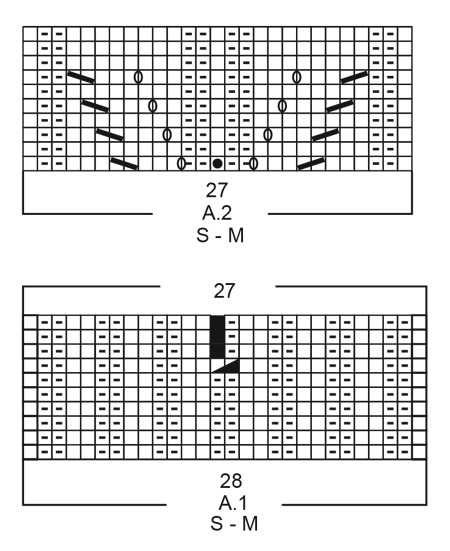 |
|||||||||||||||||||||||||
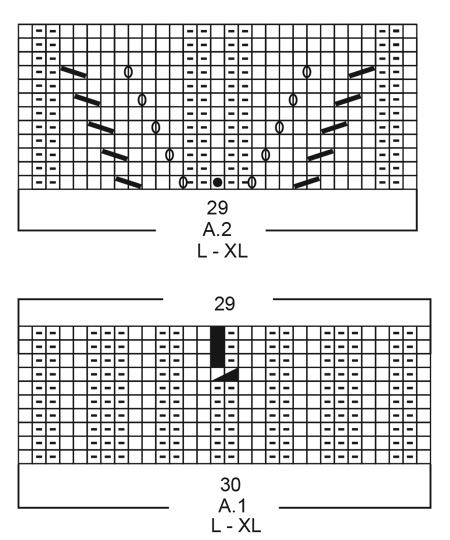 |
|||||||||||||||||||||||||
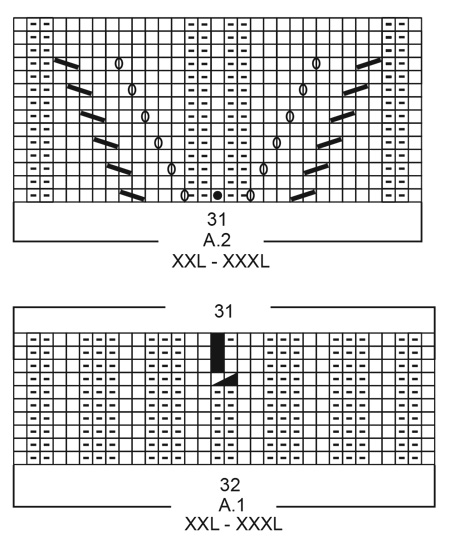 |
|||||||||||||||||||||||||
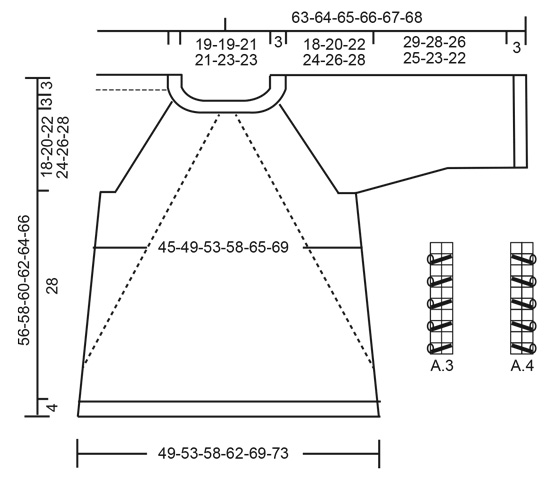 |
|||||||||||||||||||||||||
Have you finished this pattern?Tag your pictures with #dropspattern #sweetheathersweater or submit them to the #dropsfan gallery. Do you need help with this pattern?You'll find 24 tutorial videos, a Comments/Questions area and more by visiting the pattern on garnstudio.com. © 1982-2025 DROPS Design A/S. We reserve all rights. This document, including all its sub-sections, has copyrights. Read more about what you can do with our patterns at the bottom of each pattern on our site. |
|||||||||||||||||||||||||










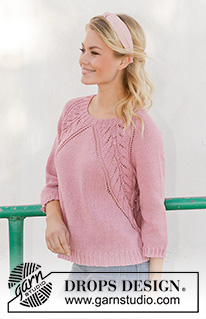
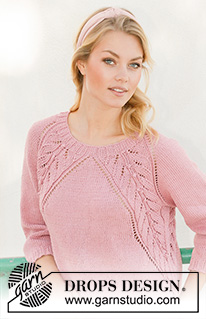
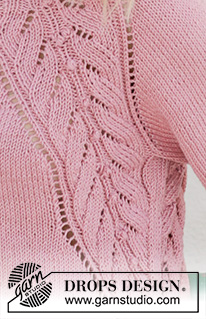






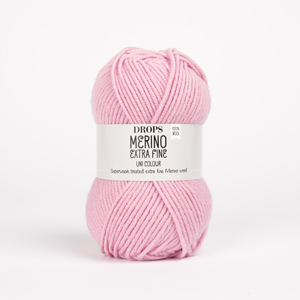
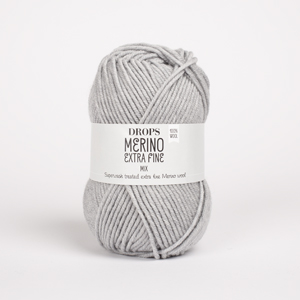

































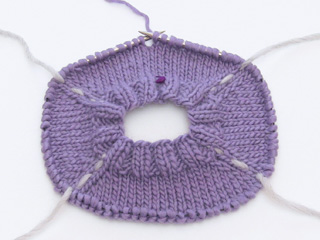















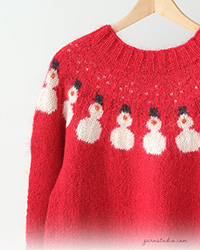
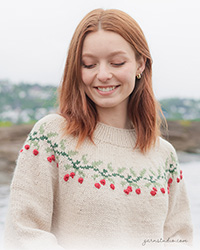
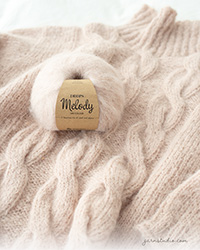
Post a comment to pattern DROPS 201-18
We would love to hear what you have to say about this pattern!
If you want to leave a question, please make sure you select the correct category in the form below, to speed up the answering process. Required fields are marked *.